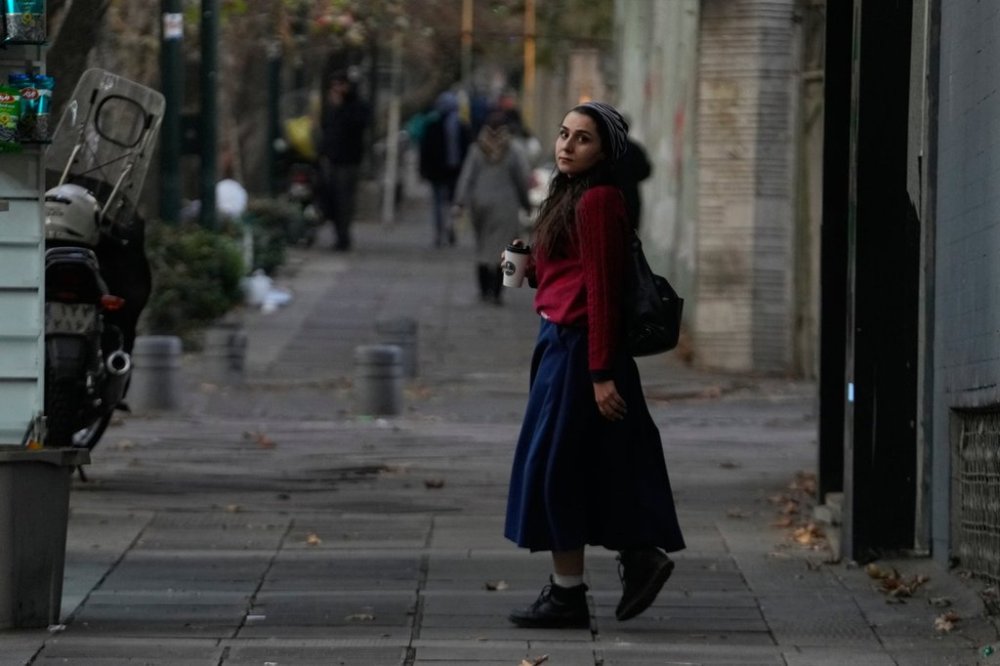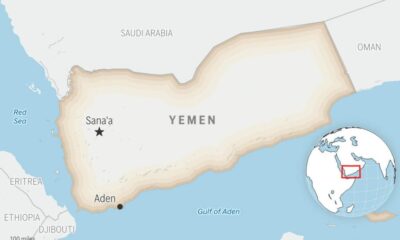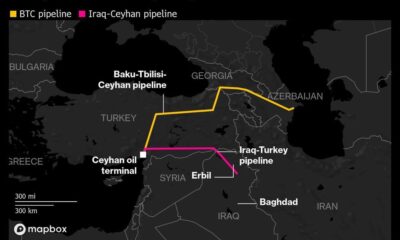World
Iranian Women Defy Hijab Laws Amid Changing Social Landscape

TEHRAN, Iran — In a striking shift from the past, women across Iran’s capital are increasingly choosing to forgo the mandatory hijab, a change that reflects broader social dynamics. This transformation follows the tragic death of Mahsa Amini in 2022, which sparked nationwide protests and ignited fervent discussions about women’s rights in the Islamic Republic.
As one enters Tehran, the initial sights of women navigating the city’s notorious traffic reveal only glimpses of this new reality. However, in the cooler, affluent neighborhoods along Vali-e Asr Street, the presence of women with uncovered hair is becoming more common. This societal defiance marks a significant departure from previous norms enforced by the Iranian government, which has mandated hijab for over four decades.
The atmosphere in Tehran contrasts sharply with the rigid enforcement seen in earlier years. “When I moved to Iran in 1999, letting a single strand of hair show would prompt immediate reprimands from others,” noted Holly Dagres, a senior fellow at the Washington Institute for Near East Policy. “To see women and girls openly defying the mandatory hijab today feels unimaginable.”
Authorities are visibly concerned about the growing numbers of women openly challenging the hijab law. The recent protests have left them wary of a potential backlash if they attempt to reassert strict controls during a time when the country faces power blackouts, water shortages, and widespread economic distress.
The journalist’s visit to Tehran was prompted by a three-day visa to attend a summit with Iranian Foreign Minister Abbas Araghchi, amid heightened tensions regarding the country’s nuclear program. Limited access to reporting opportunities provided a unique perspective, marking the first visit to Iran since 2018.
Since then, the country has been rocked by protests fueled by economic hardship and civil unrest. The hijab has long been a symbol of the state’s enforcement of Islamic values. While many women previously complied with the law, the death of Amini has galvanized a new wave of resistance.
At Tajrish Square, young girls shed their hijabs as soon as they leave school, laughing and darting through traffic, showcasing a newfound freedom. Women of various ages can be seen at local bazaars and religious sites, confidently walking past signs urging adherence to the hijab.
Even in more conservative areas of southern Tehran, instances of women walking without hijabs are emerging, indicating a potential shift in societal expectations. “I always tried to follow the rules, but wearing the hijab made me feel a lack of confidence,” shared an Iranian woman who recently emigrated to Canada, speaking anonymously for fear of retribution.
The political climate remains fraught, with hard-liners advocating for stricter hijab enforcement. However, reformist President Masoud Pezeshkian has called for a reevaluation of these policies, emphasizing individual rights. He acknowledged in a September interview that “human beings have a right to choose,” a sentiment that resonates with many Iranians.
The government’s approach to the hijab issue appears cautious, especially following the recent conflict with Israel and the international community’s scrutiny over Iran’s nuclear ambitions. With economic pressures mounting and the Iranian rial trading at over 1 million to $1, the government grapples with public dissatisfaction and the fear of renewed protests.
Recent surveys conducted by the state-linked Iranian Students Polling Agency reveal significant discontent among the populace, a sentiment not previously acknowledged by officials. “Years of economic hardship and public frustration over social challenges have sharply eroded trust in institutions,” noted an analysis by the National Iranian American Council.
Conversations across Tehran reflect a palpable fear of another conflict. “Sometimes that fear is with me,” the Iranian woman in Canada confessed. “When I’m driving, I instinctively check for my headscarf. That fear is still with me.”
As Iran navigates this delicate period of change, the actions of its women signal a potential turning point in the nation’s relationship with personal freedoms and government authority. The evolving landscape in Tehran offers a glimpse into a society in transition, where the voices of women are increasingly asserting their rights amidst a backdrop of political and economic challenges.
-

 Politics3 weeks ago
Politics3 weeks agoSecwepemc First Nation Seeks Aboriginal Title Over Kamloops Area
-

 World4 months ago
World4 months agoScientists Unearth Ancient Antarctic Ice to Unlock Climate Secrets
-

 Entertainment5 months ago
Entertainment5 months agoTrump and McCormick to Announce $70 Billion Energy Investments
-

 Lifestyle4 months ago
Lifestyle4 months agoTransLink Launches Food Truck Program to Boost Revenue in Vancouver
-

 Science5 months ago
Science5 months agoFour Astronauts Return to Earth After International Space Station Mission
-

 Technology3 months ago
Technology3 months agoApple Notes Enhances Functionality with Markdown Support in macOS 26
-

 Top Stories2 months ago
Top Stories2 months agoUrgent Update: Fatal Crash on Highway 99 Claims Life of Pitt Meadows Man
-

 Lifestyle2 months ago
Lifestyle2 months agoManitoba’s Burger Champion Shines Again Amid Dining Innovations
-

 Politics4 months ago
Politics4 months agoUkrainian Tennis Star Elina Svitolina Faces Death Threats Online
-

 Sports5 months ago
Sports5 months agoSearch Underway for Missing Hunter Amid Hokkaido Bear Emergency
-

 Politics4 months ago
Politics4 months agoCarney Engages First Nations Leaders at Development Law Summit
-

 Technology5 months ago
Technology5 months agoFrosthaven Launches Early Access on July 31, 2025





















